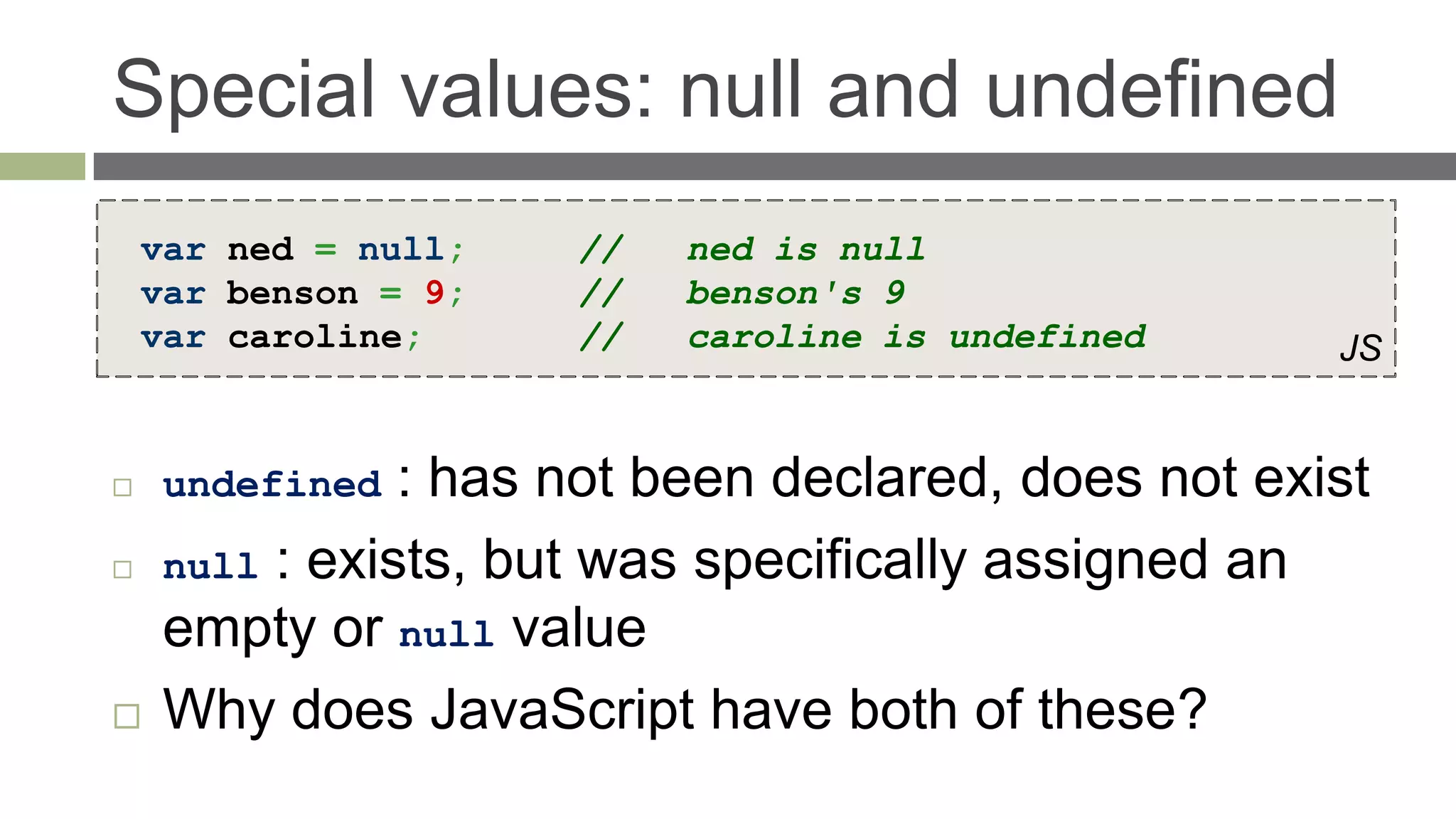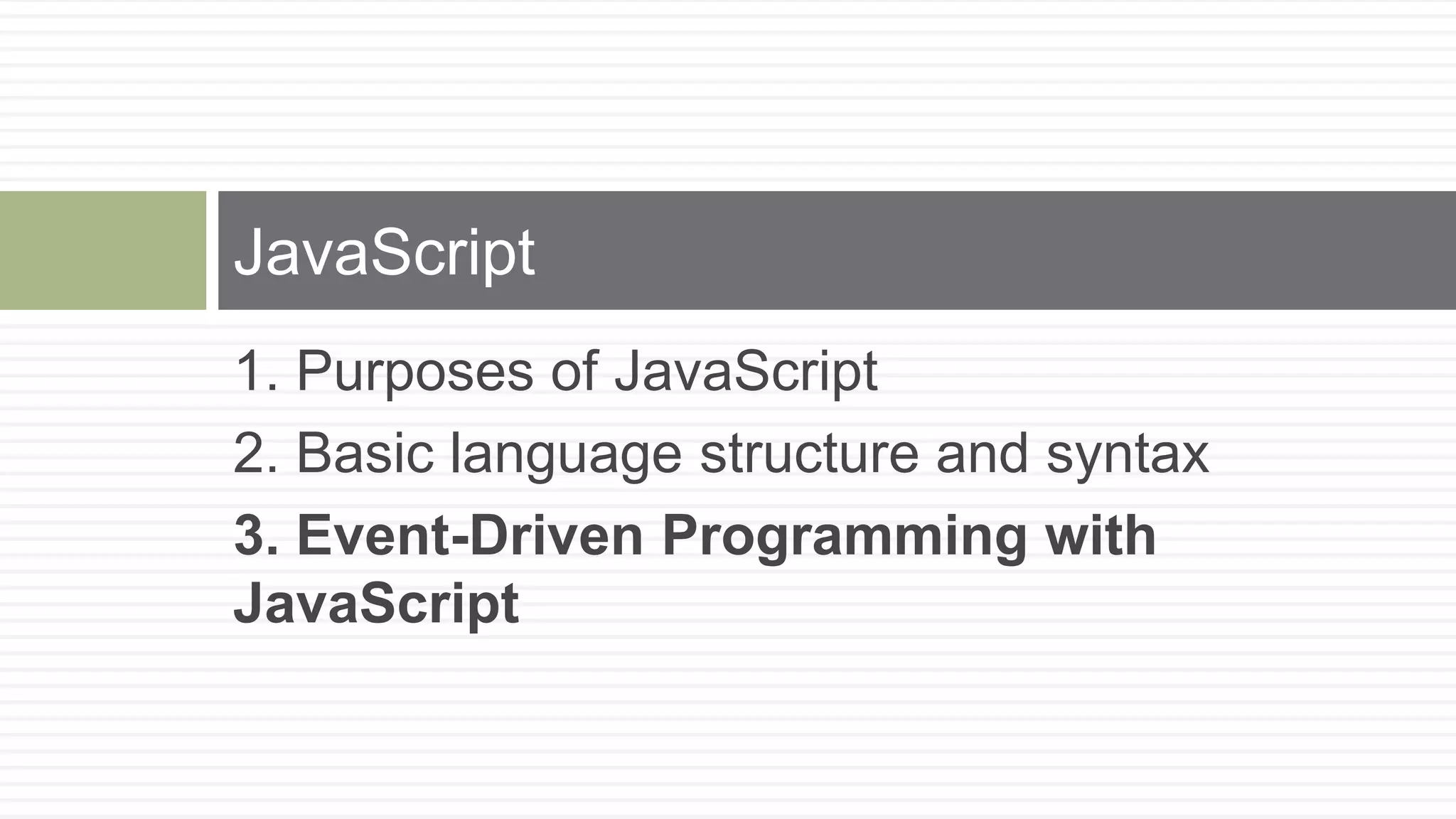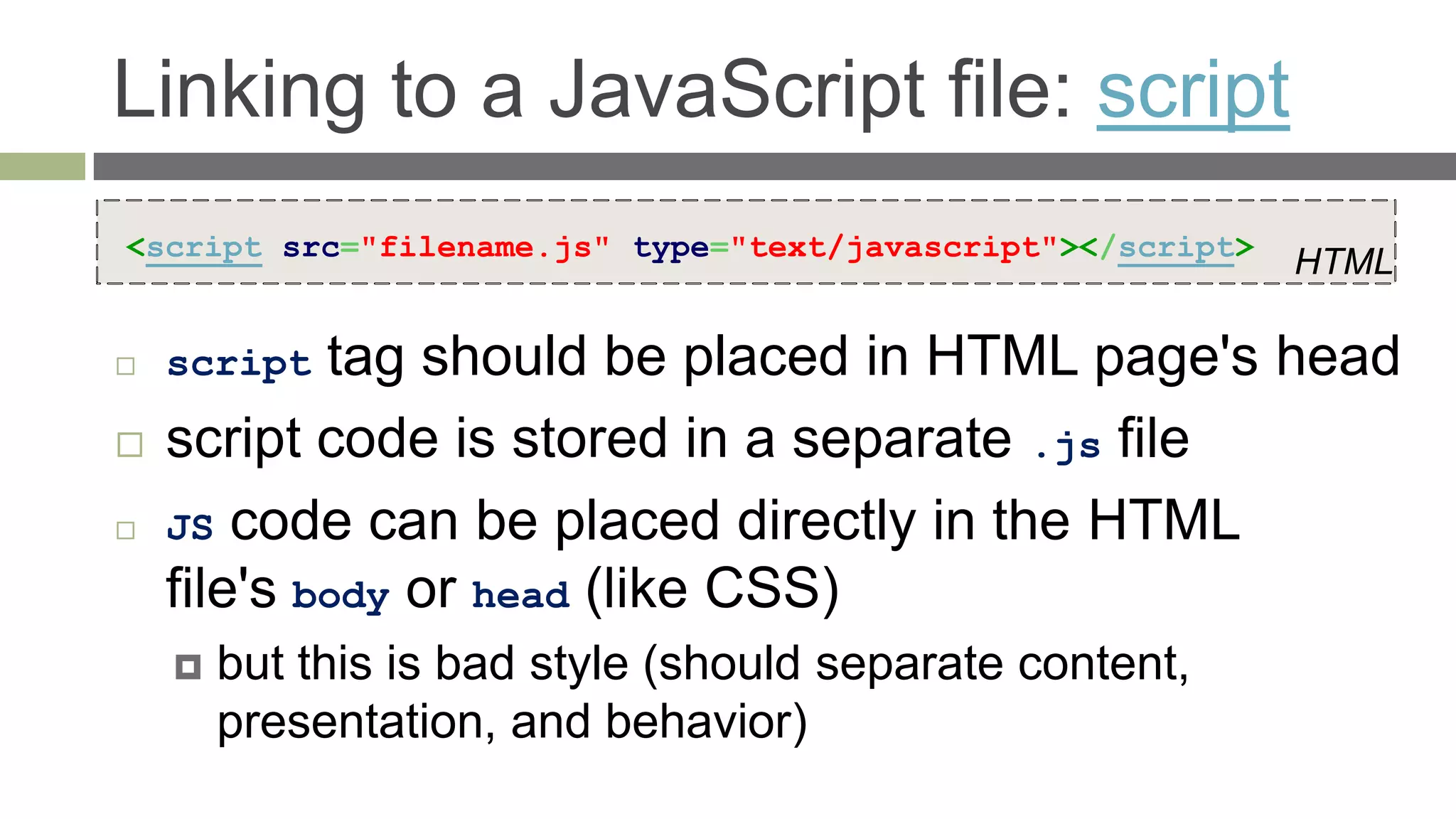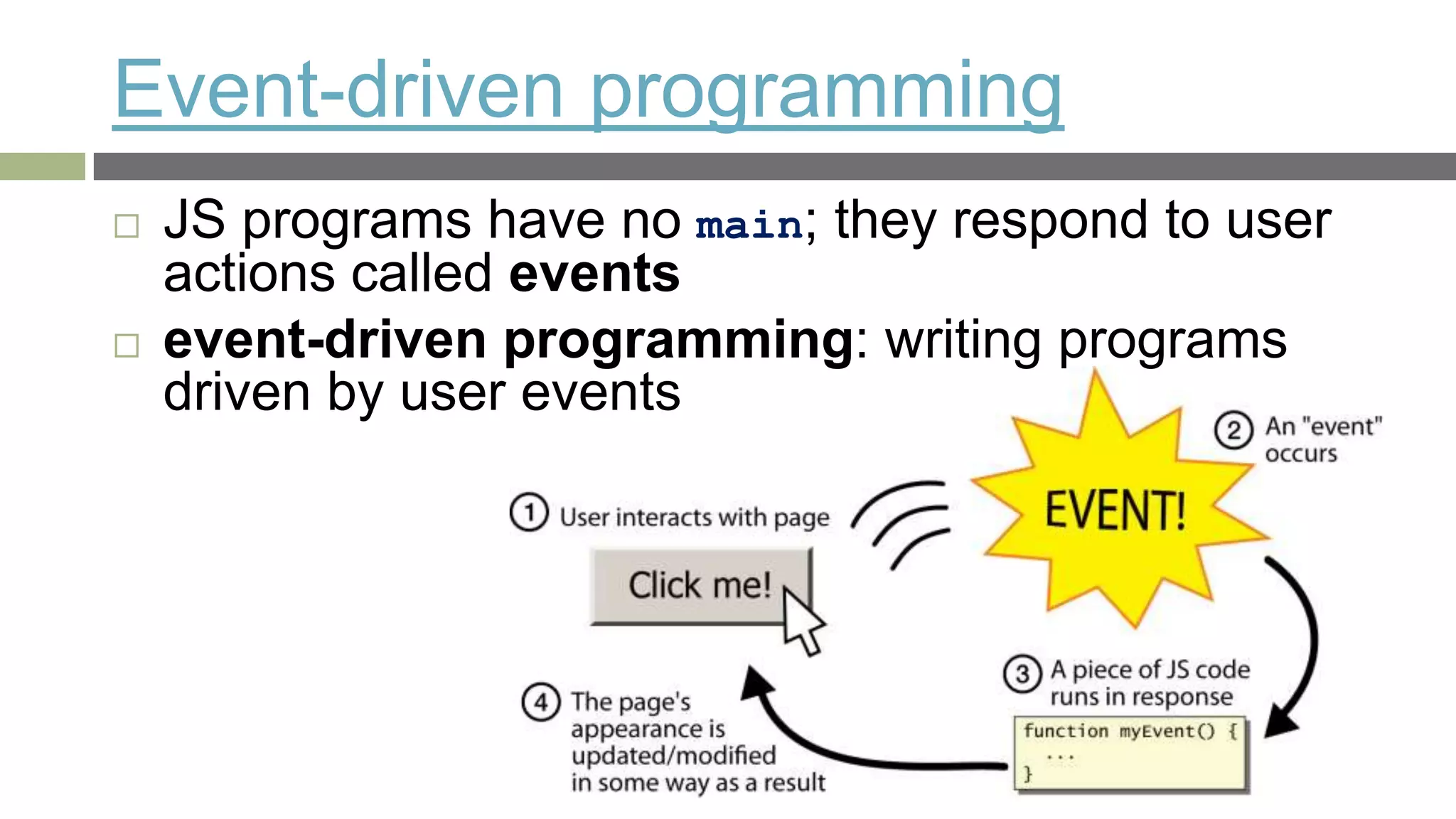This document provides an introduction to JavaScript. It discusses the purposes of JavaScript including making web pages interactive by responding to events and accessing information about the user's computer. It compares JavaScript to other languages like Java and PHP. The document then covers basic JavaScript syntax and constructs including variables, data types, operators, conditional statements, functions, and arrays. It provides examples of how to use many common JavaScript features.

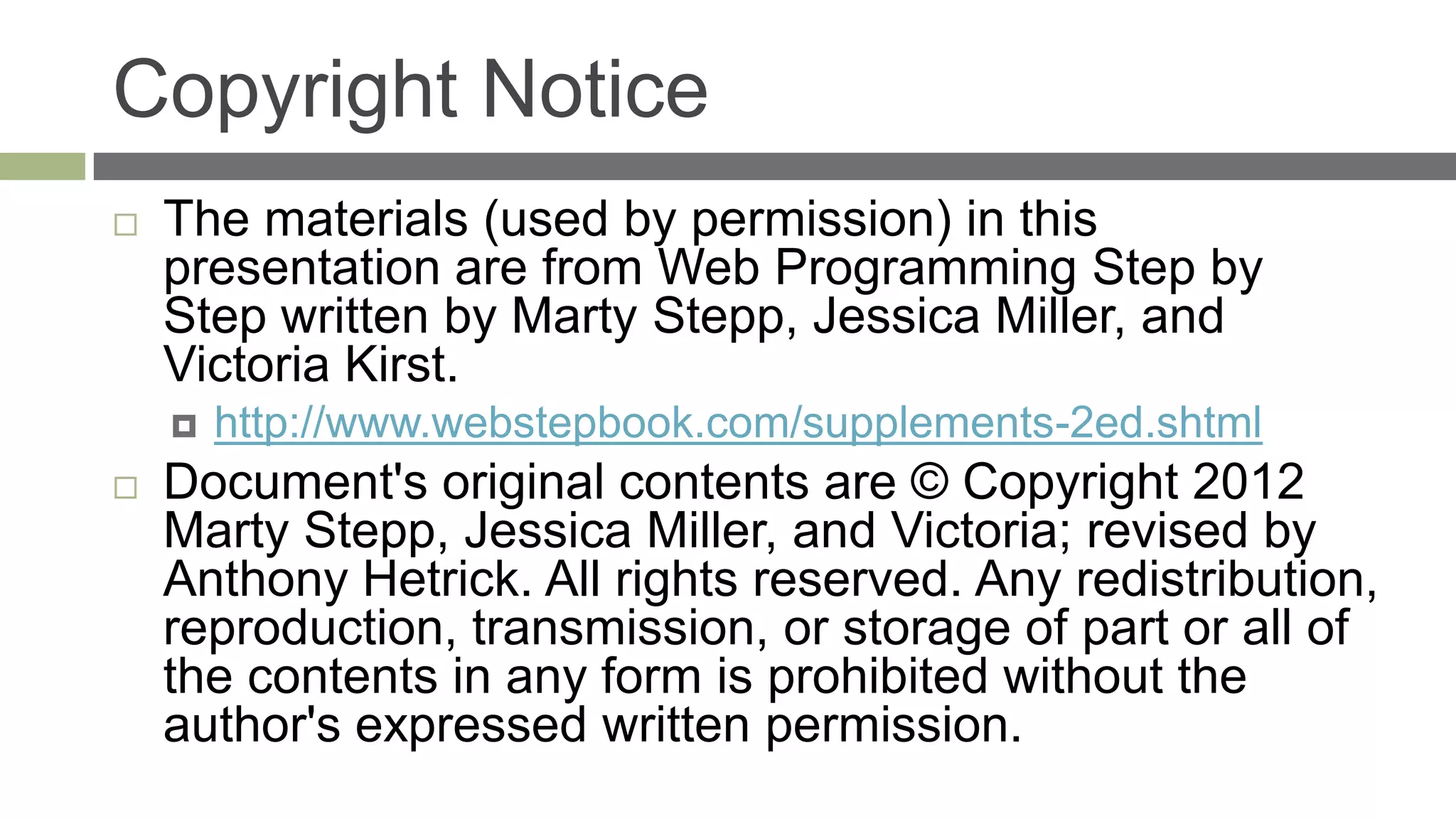
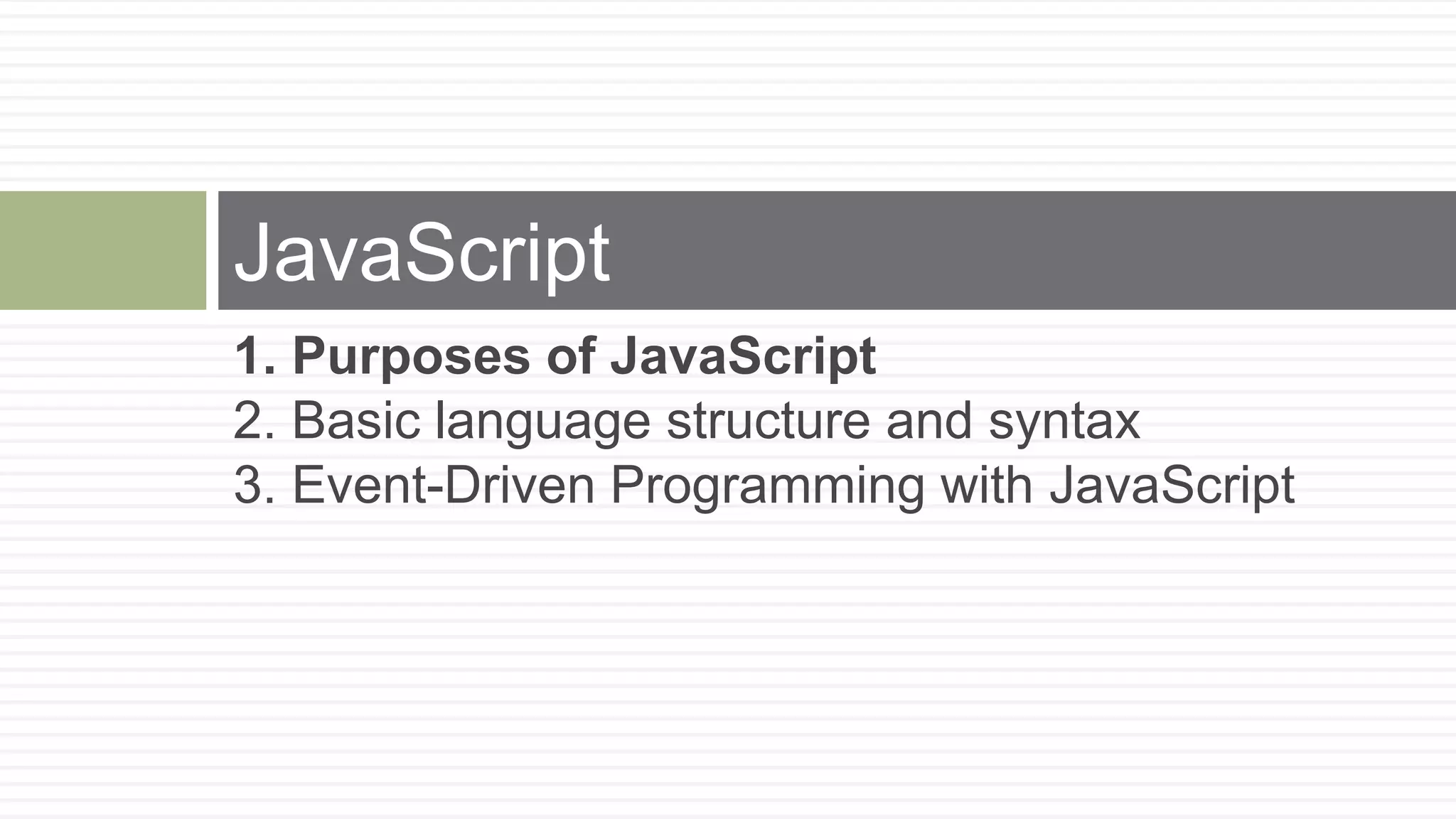

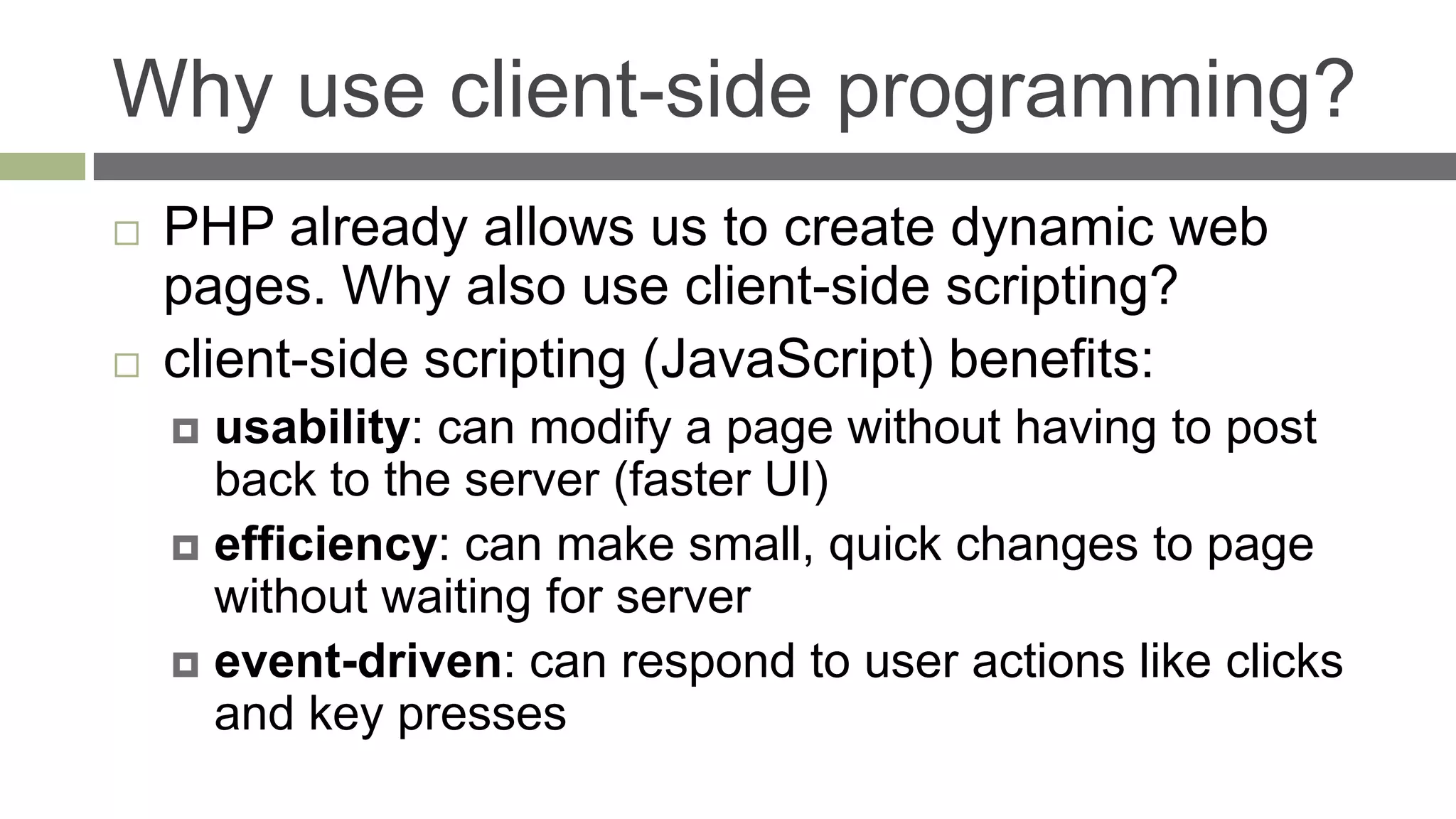

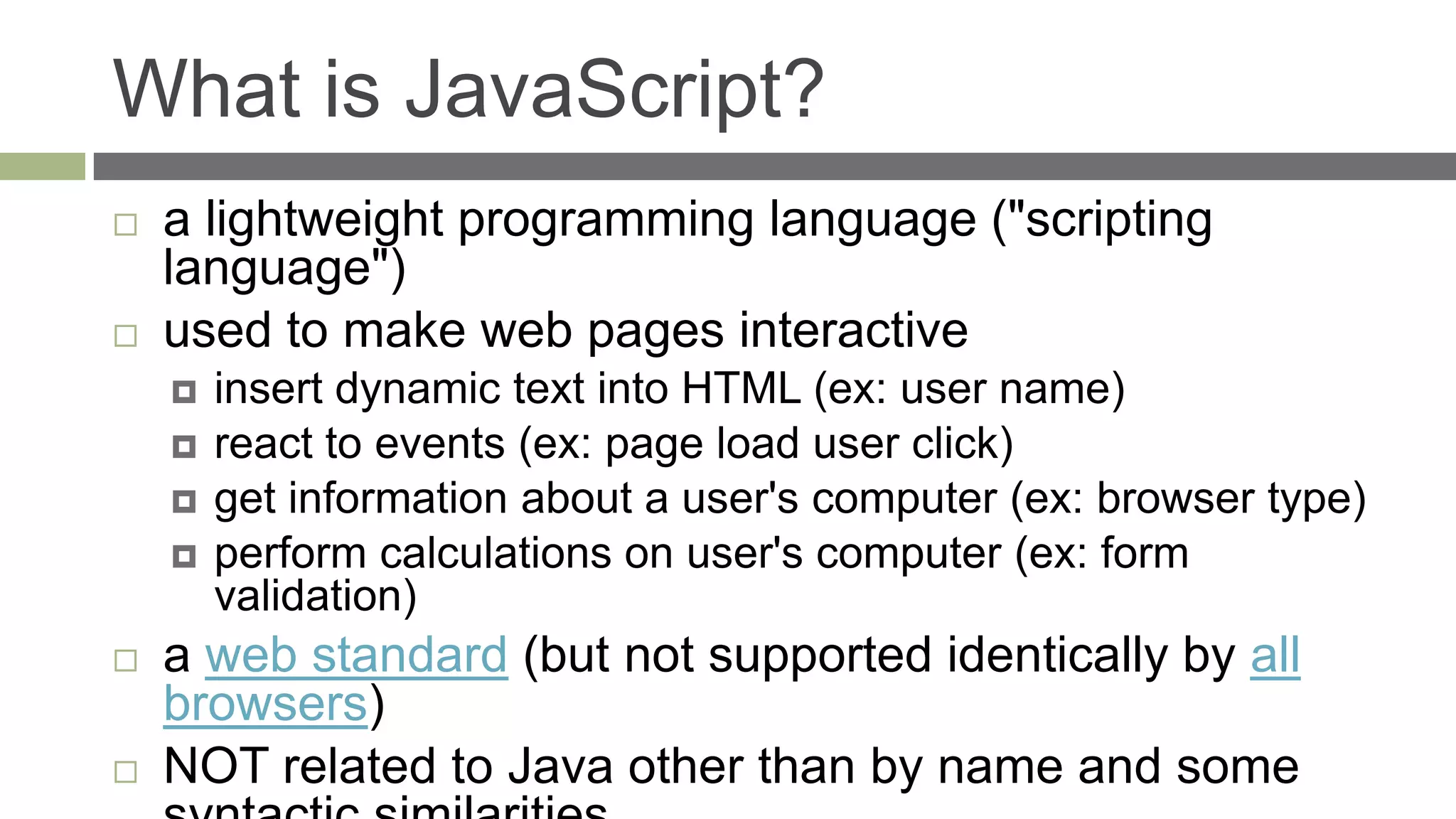


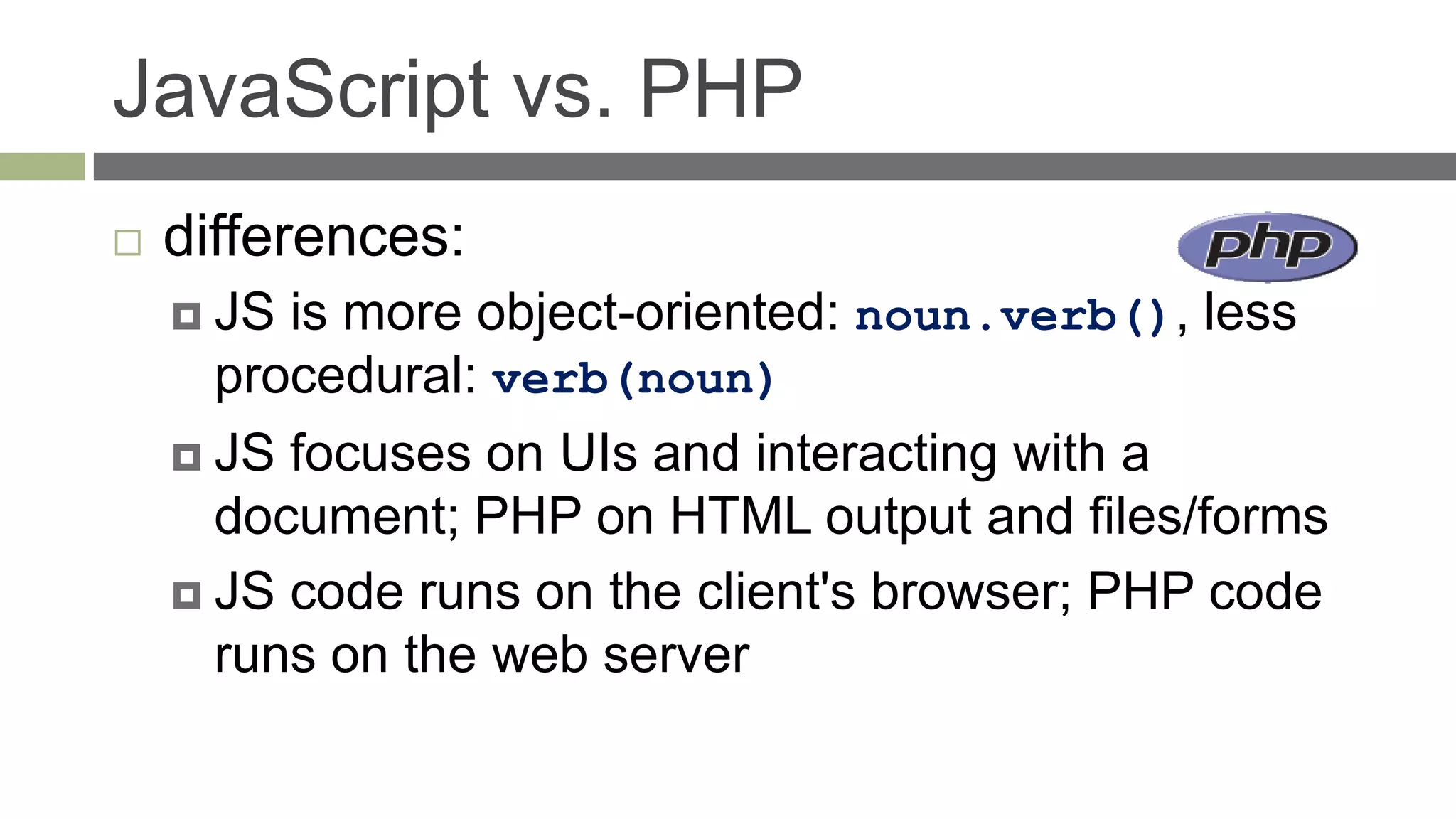

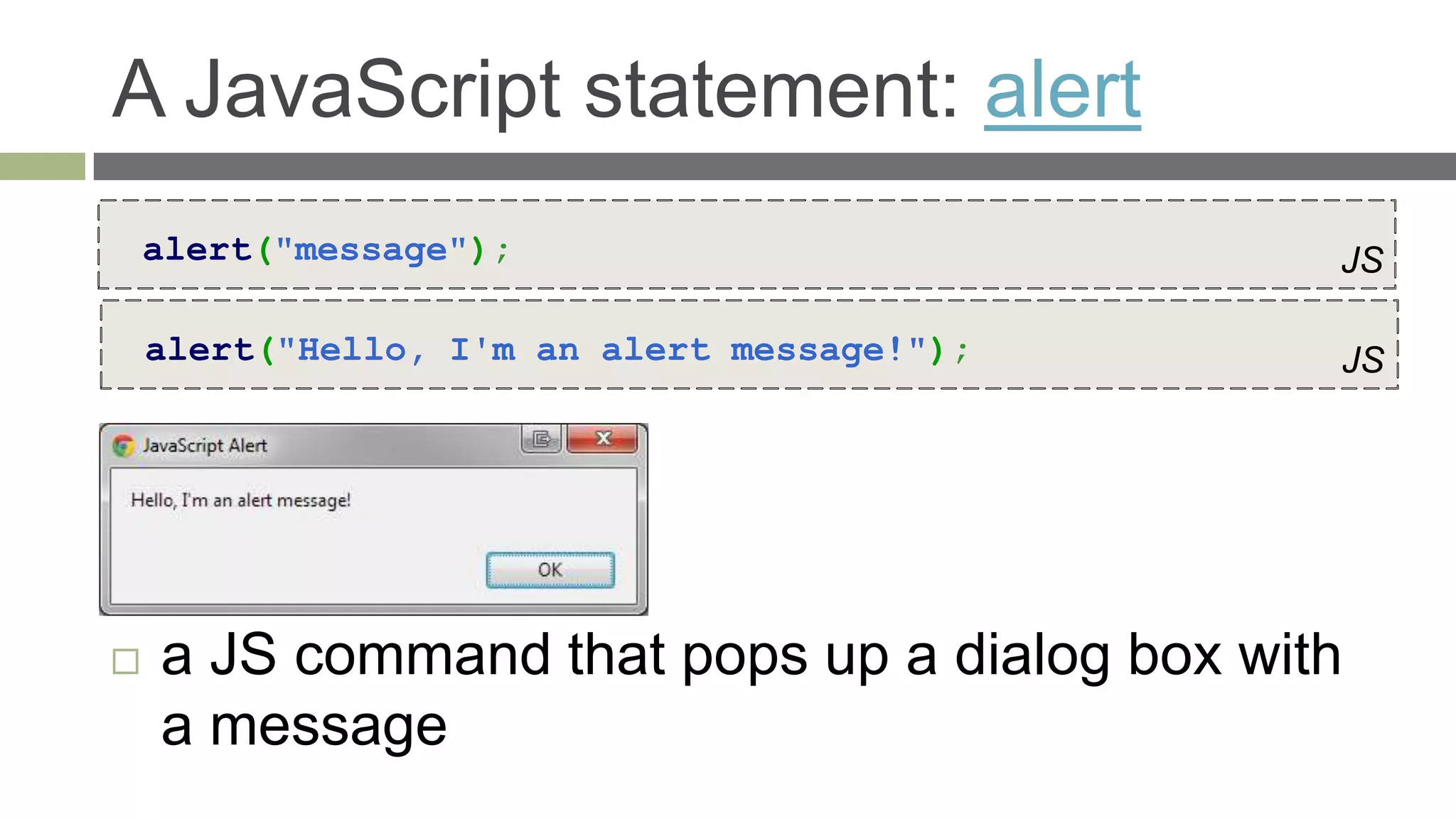
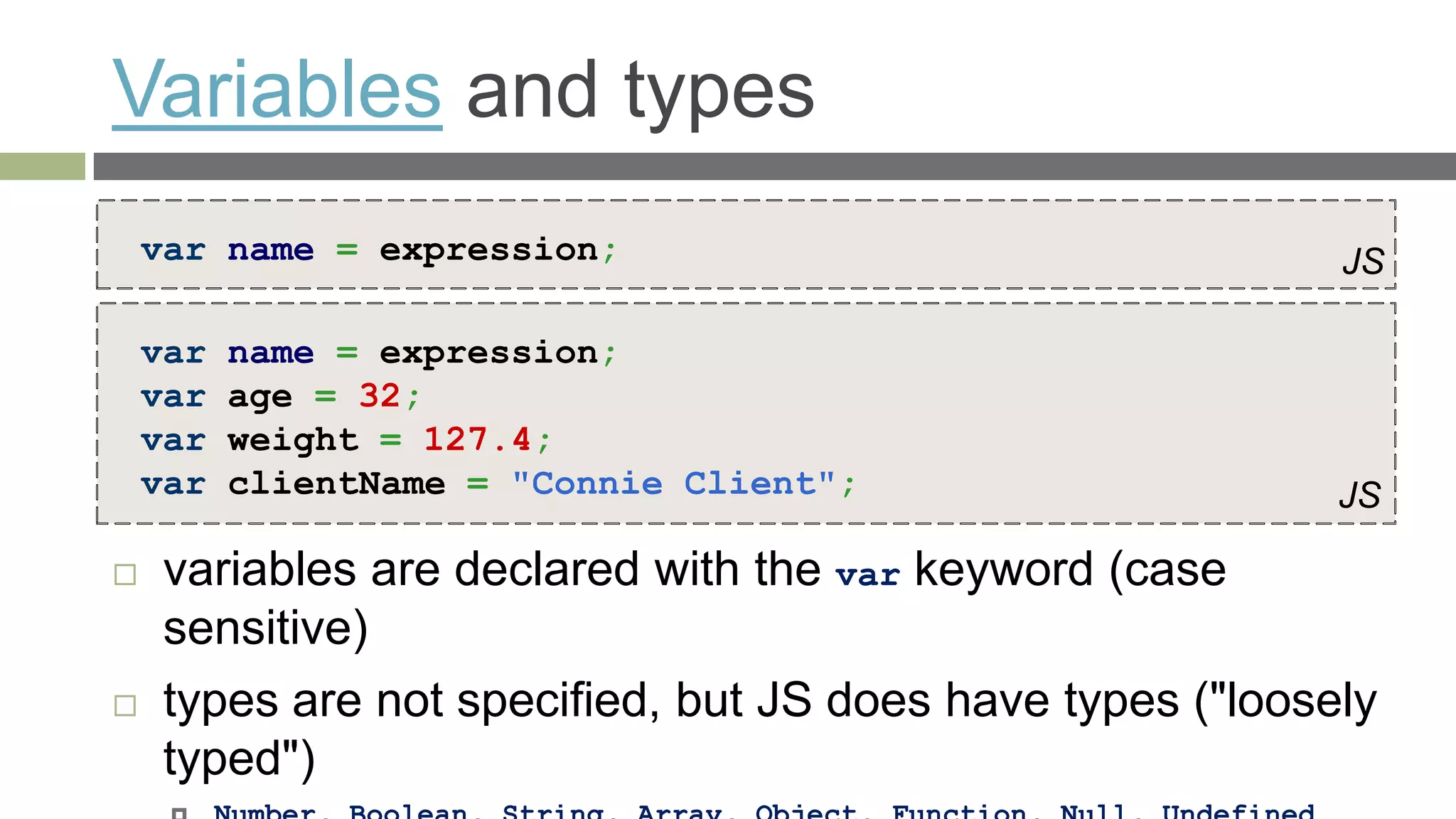


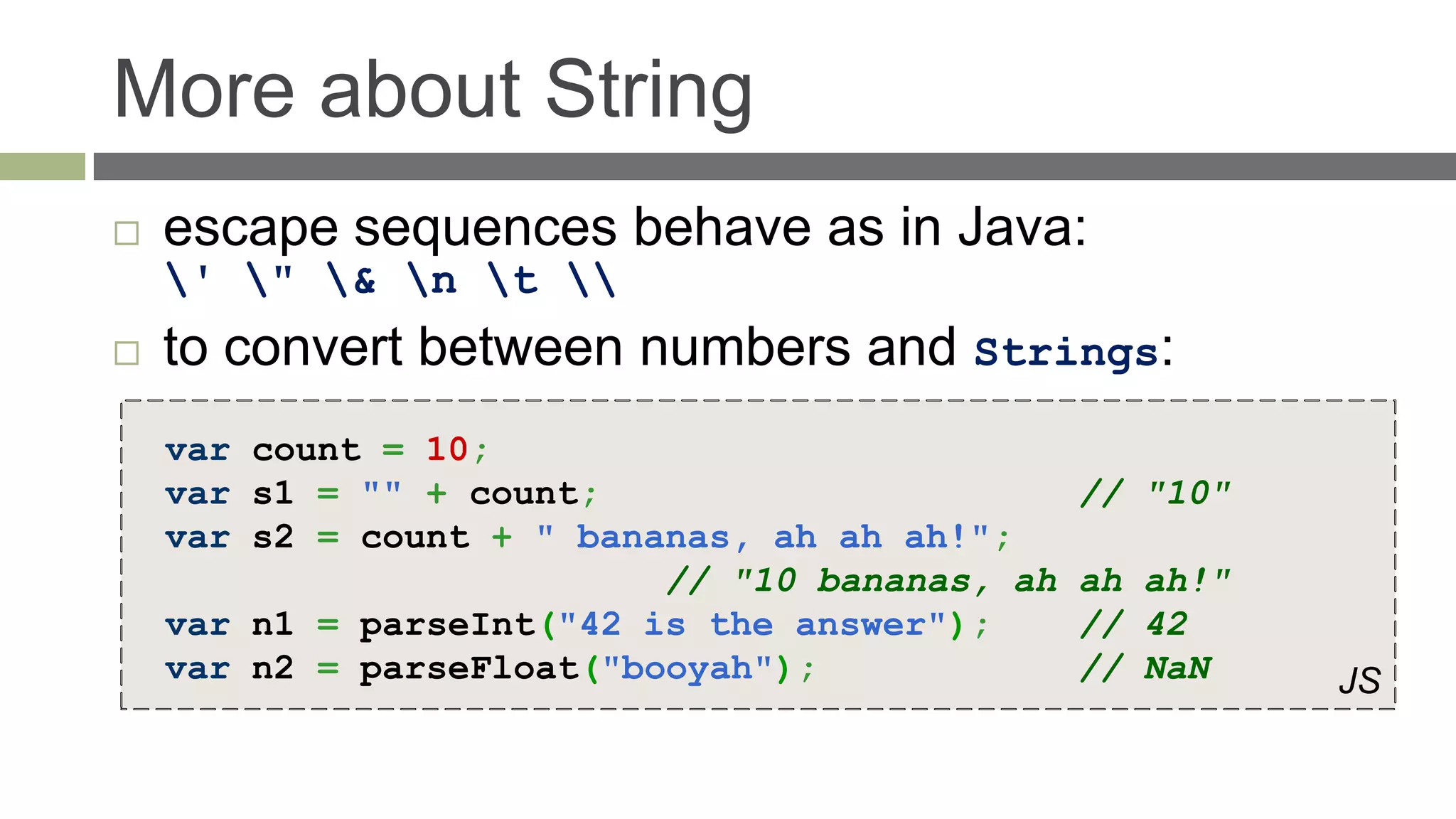
![More about String to access characters of a String, use [index] or charAt: var firstLetter = s[0]; var firstLetter = s.charAt(0); var lastLetter = s.charAt(s.length - 1); JS](https://image.slidesharecdn.com/anintroductiontojavascript-130306230241-phpapp01/75/An-introduction-to-javascript-17-2048.jpg)
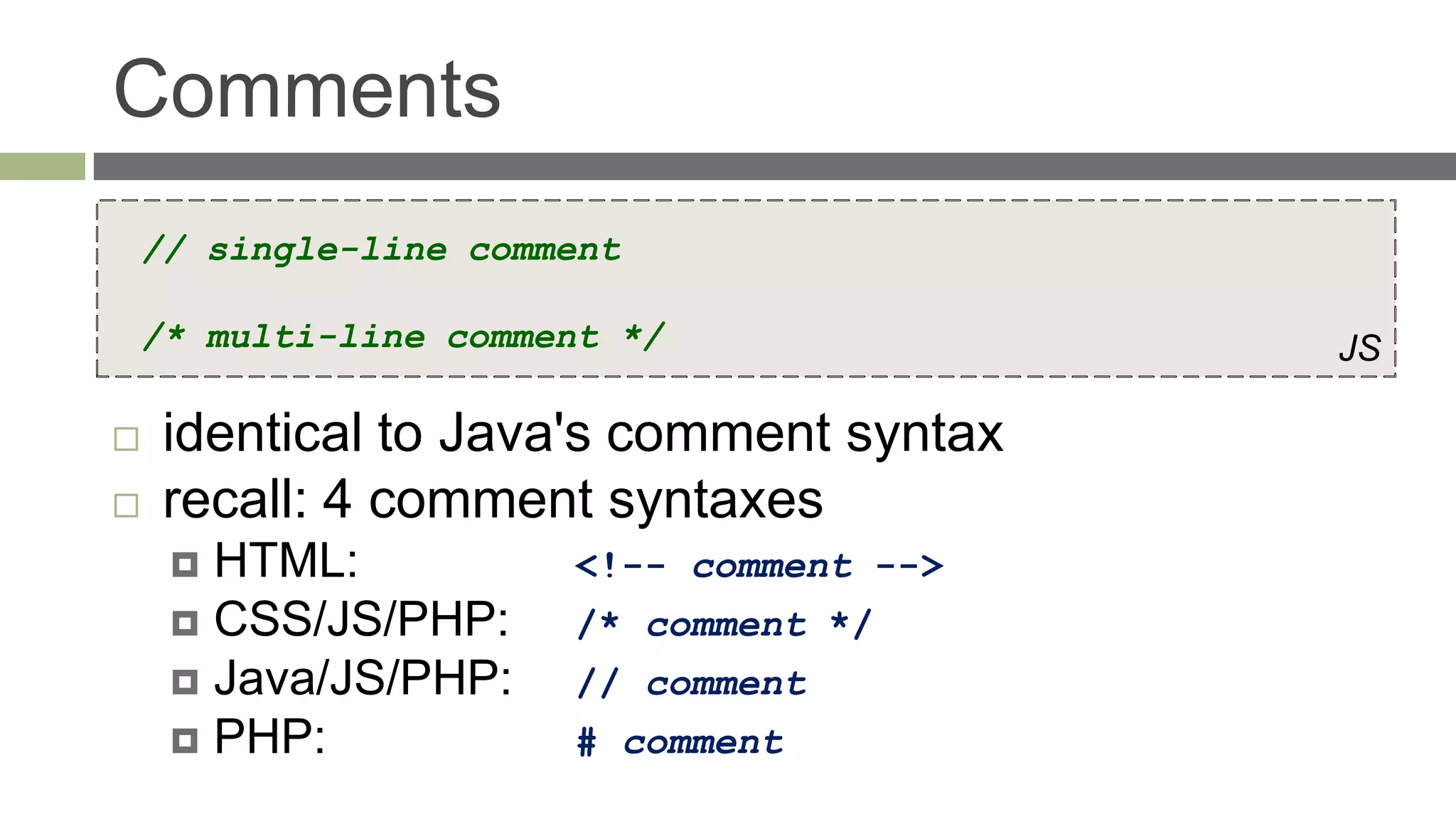
![for loop for (initialization; condition; update) { statements; } JS var s1 = "hello"; var s2 = ""; for (var i = 0; i < s.length; i++) { s2 += s1[i] + s1[i]; } // s2 stores "hheelllloo" JS](https://image.slidesharecdn.com/anintroductiontojavascript-130306230241-phpapp01/75/An-introduction-to-javascript-19-2048.jpg)
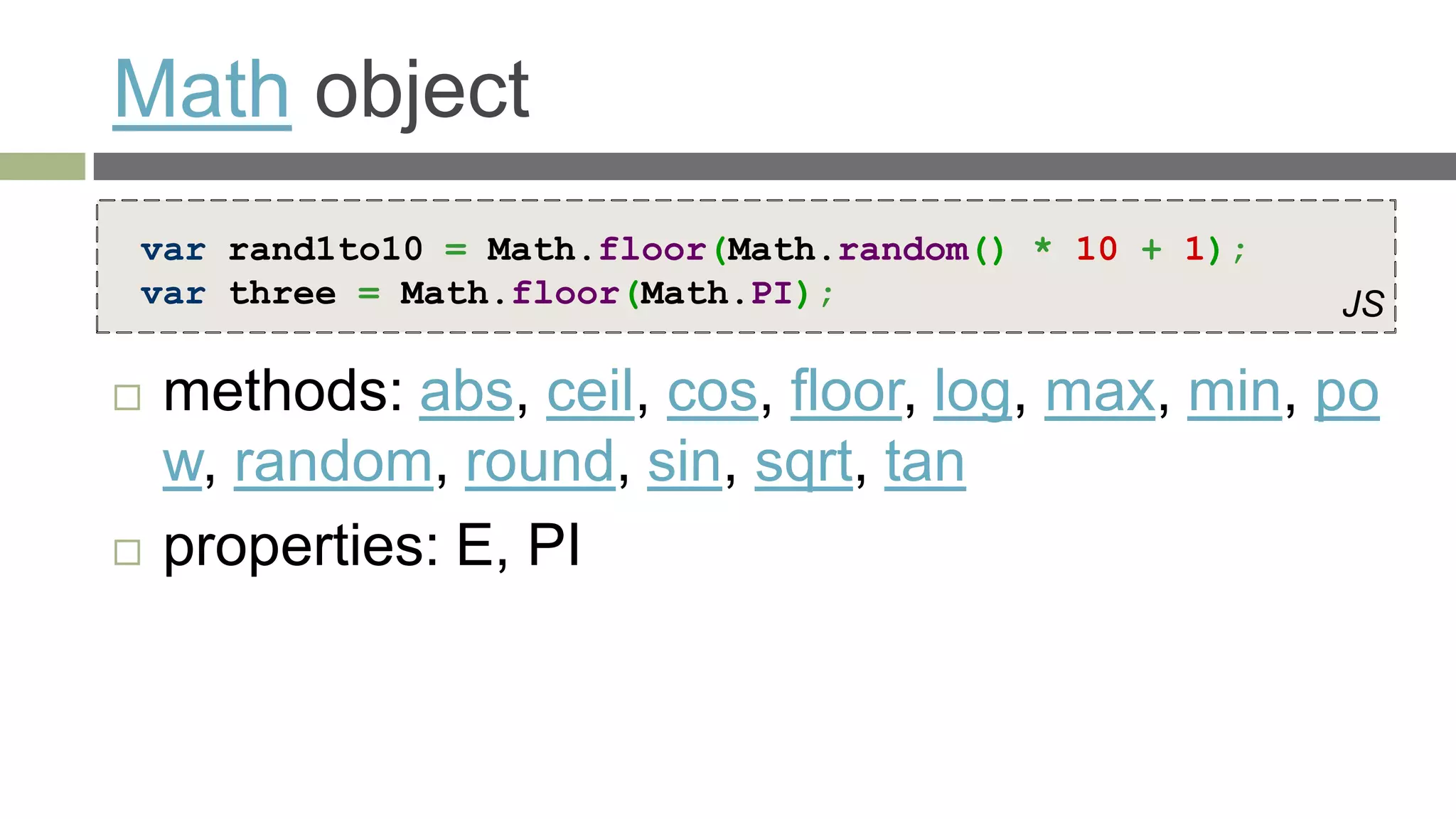
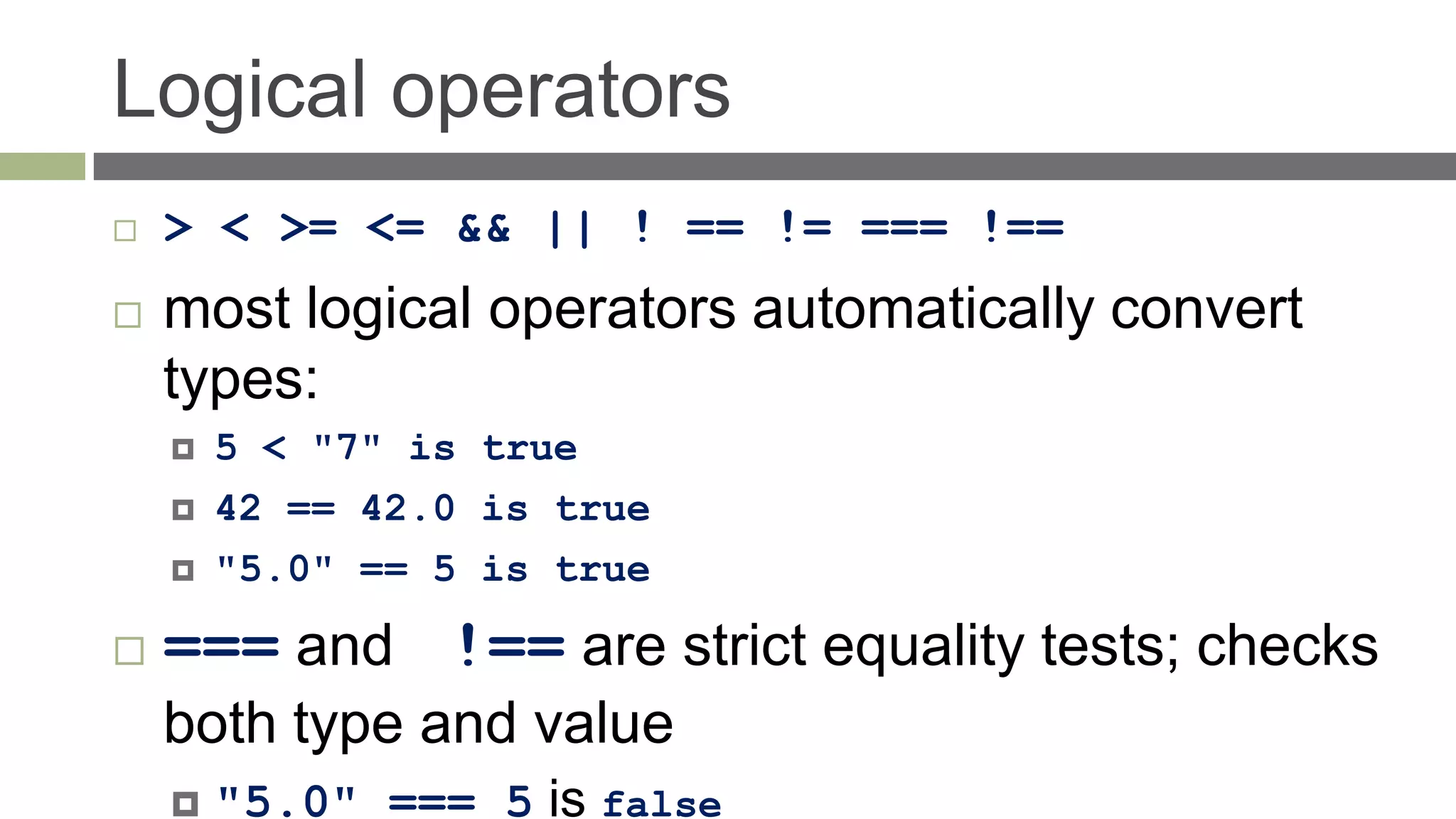
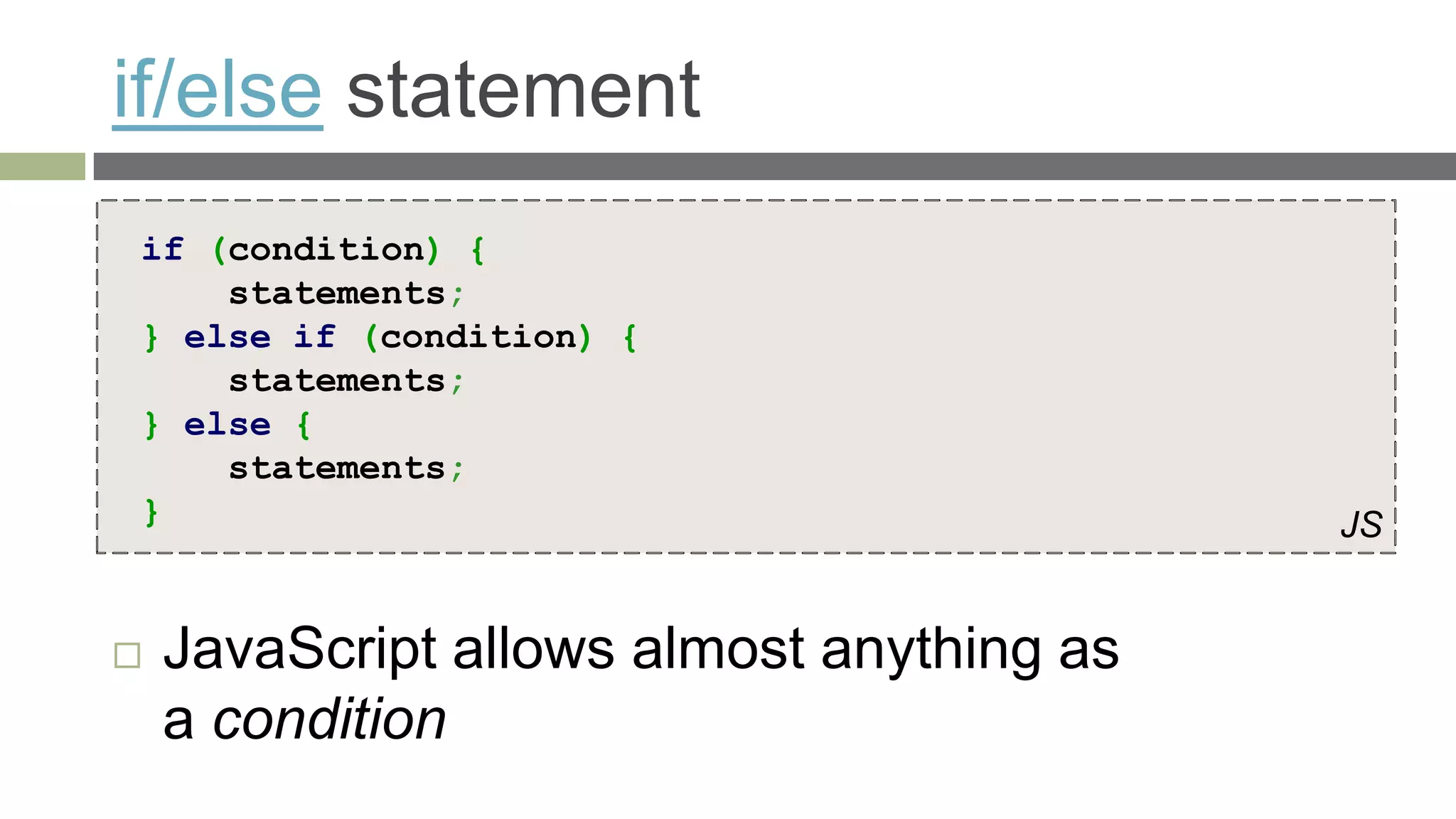

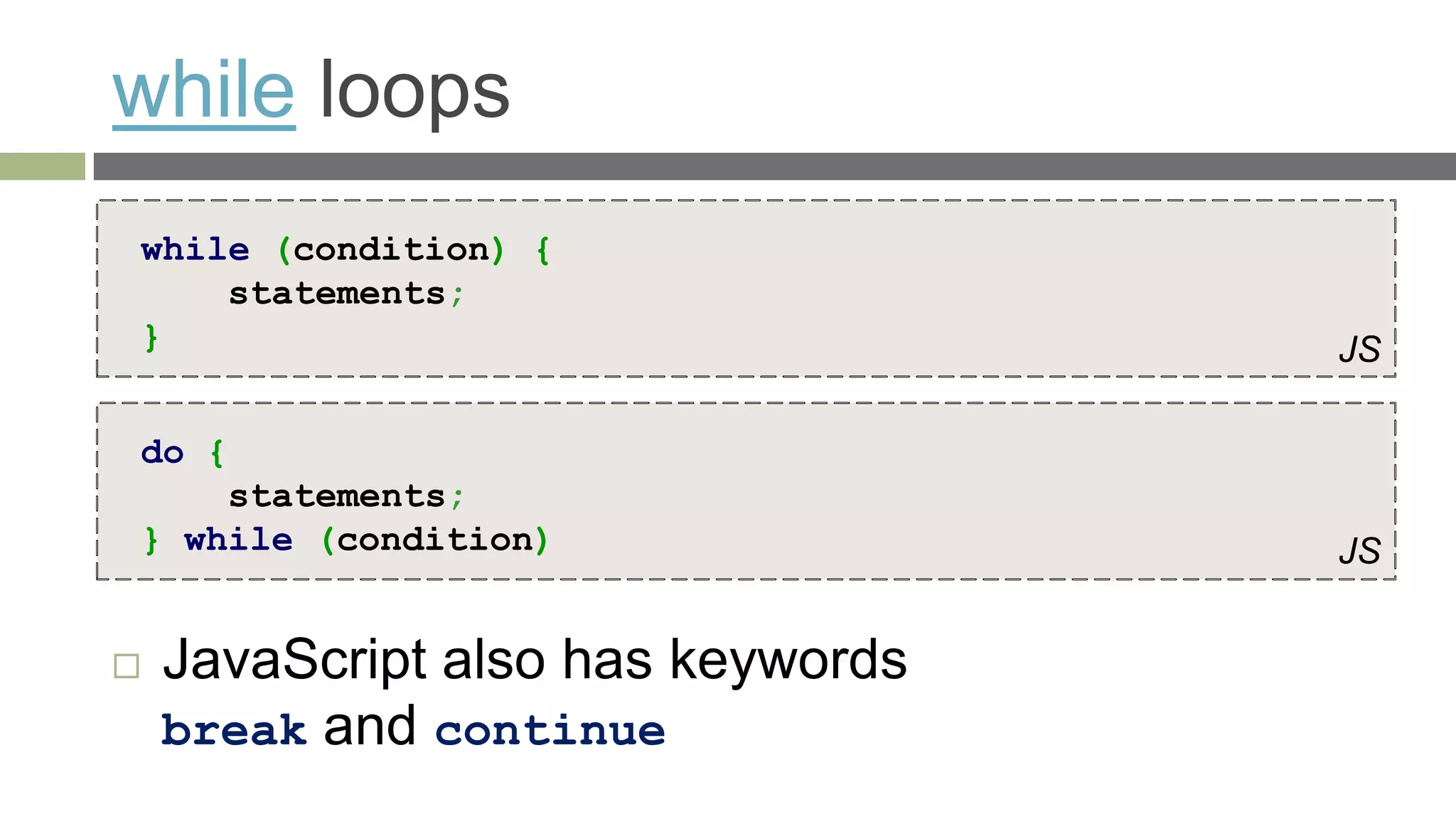
![Arrays var name = []; // empty array var name = [value, value, ..., value]; // pre-filled name[index] = value; // store elementJS two ways to initialize an array length property (grows as needed when elements are added)](https://image.slidesharecdn.com/anintroductiontojavascript-130306230241-phpapp01/75/An-introduction-to-javascript-25-2048.jpg)
![Arrays var ducks = ["Huey", "Dewey", "Louie"]; var stooges = []; // stooges.length is 0 stooges[0] = "Larry"; // stooges.length is 1 stooges[1] = "Moe"; // stooges.length is 2 stooges[4] = "Curly"; // stooges.length is 5 stooges[4] = "Shemp"; // stooges.length is 5 JS two ways to initialize an array length property (grows as needed when elements are added)](https://image.slidesharecdn.com/anintroductiontojavascript-130306230241-phpapp01/75/An-introduction-to-javascript-26-2048.jpg)
![Array methods var a = ["Stef", "Jason"]; // Stef, Jason a.push("Brian"); // Stef, Jason, Brian a.unshift("Kelly"); // Kelly, Stef, Jason, Brian a.pop(); // Kelly, Stef, Jason a.shift(); // Stef, Jason a.sort(); // Jason, Stef JS array serves as many data structures: list, queue, stack, ...](https://image.slidesharecdn.com/anintroductiontojavascript-130306230241-phpapp01/75/An-introduction-to-javascript-27-2048.jpg)
![Array methods var a = ["Stef", "Jason"]; // Stef, Jason a.push("Brian"); // Stef, Jason, Brian a.unshift("Kelly"); // Kelly, Stef, Jason, Brian a.pop(); // Kelly, Stef, Jason a.shift(); // Stef, Jason a.sort(); // Jason, Stef JS methods: concat, join, pop, push, reverse, shift, slice, sort, spl ice, toString, unshift push and pop add / remove from back unshift and shift add / remove from front shift and pop return the element that is removed](https://image.slidesharecdn.com/anintroductiontojavascript-130306230241-phpapp01/75/An-introduction-to-javascript-28-2048.jpg)
![Splitting strings: split and join var s = "the quick brown fox"; var a = s.split(" "); // ["the", "quick", "brown", "fox"] a.reverse(); // ["fox", "brown", "quick", "the"] s = a.join("!"); // "fox!brown!quick!the" JS split breaks apart a string into an array using a delimiter can also be used with regular expressions surrounded by /: var a = s.split(/[ t]+/); join merges an array into a single string, placing a delimiter between them](https://image.slidesharecdn.com/anintroductiontojavascript-130306230241-phpapp01/75/An-introduction-to-javascript-29-2048.jpg)

